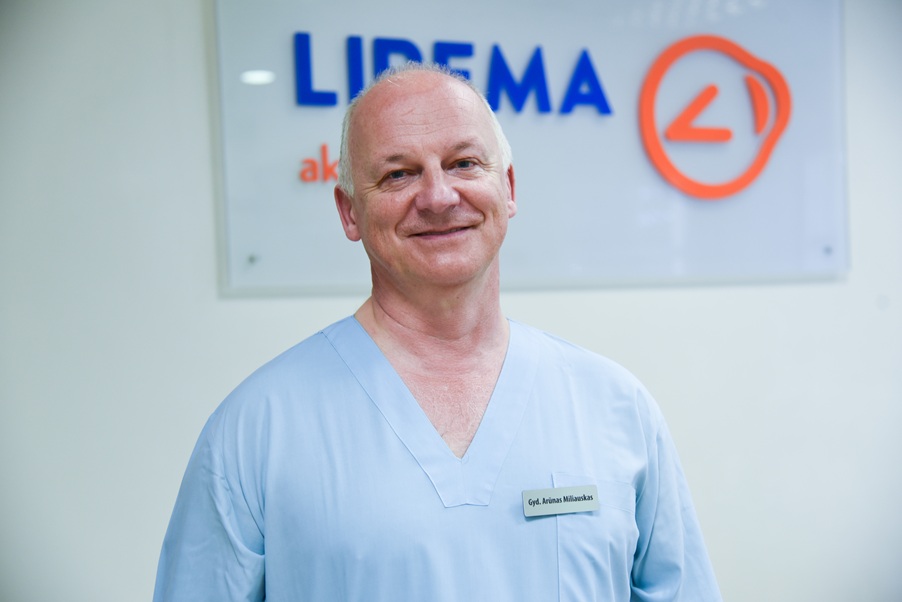Cataract is one of the most common age-related eye diseases, but in recent times, it has also been diagnosed in people younger than fifty. It develops gradually – the eye’s lens becomes cloudy and vision less sharp, as if fog covers it. If symptoms are ignored, vision deteriorates until it interferes with everyday life.
According to microsurgeon Arūnas Miliauskas, cataract surgery is one of the fastest and safest procedures in ophthalmology. However, its outcome depends not only on the surgeon’s work or the technology used but also on the correctly chosen implanted lens and the time the patient applies.
Risk Arises as Early as Forty
“Global trends show that the average age of cataract patients is rapidly getting younger. While previously most patients used to be in their 70s or older, we are now consulting more and more people in their forties,” shares A. Miliauskas.
The doctor notes that the main risk factors for cataracts are not only age, but also smoking, diabetes, thyroid disorders, long-term use of steroid medications, previous head or eye injuries, and heredity.
“The lens of the eye becomes cloudy gradually, so, at first, patients may not even notice that their vision is worsening. The longer the patient delays, the harder it is to restore vision fully. Regular visits to an eye doctor can help prevent irreversible consequences,” the microsurgeon warns.
If left untreated, cataract not only causes daily discomfort and disrupts life routines but also increases the risk of injuries or even traffic accidents.
What Is the Importance of an Implantable Lens?
During cataract surgery, the clouded lens is removed and replaced with a new artificial one, so choosing one that best suits the patient’s lifestyle and vision needs is extremely important.
“Patients are offered different types of lenses – from basic ones reimbursed by the state to advanced toric, aspheric, multifocal, or EDoF (extended depth-of-focus) lenses. For example, toric lenses correct astigmatism, while aspheric lenses are superior in low light, increasing contrast sensation,” A. Miliauskas lists the advantages.
For those who need good vision both at a distance and up close – active people wanting to avoid dependence on glasses – it is better to choose multifocal lenses that allow for clear vision at various distances.
“Unlike basic or monofocal lenses, multifocal lenses are designed for clear vision at multiple distances – near to far. Modern lens technologies provide patients freedom – no more constantly changing glasses depending on the situation or having several pairs for different activities,” the doctor says.
Fast Result for a Lifetime
A modern, non-neglected cataract surgery takes up to 10 minutes, is performed under local anaesthesia, and the patient can go home after half an hour. The bandage is removed the next day.
“Today’s artificial lenses are made from high-quality materials, remain stable in the eye, and reduce the risk of secondary cataracts. An incision of just 2 mm is made, which heals quickly, allowing the patient to rapidly return to their normal routine. There are no special post-operative requirements,” the doctor emphasizes.
A. Miliauskas adds that multifocal lenses are often compared to progressive glasses – except they do not scratch, fog up, and are never left forgotten on the table.
“A properly selected lens not only restores vision quickly, but also, in the absence of other pathology, ensures the quality of vision for decades – the lens is implanted for life. It’s a one-time investment in comfort and high-quality daily life,” summarizes A. Miliauskas.
